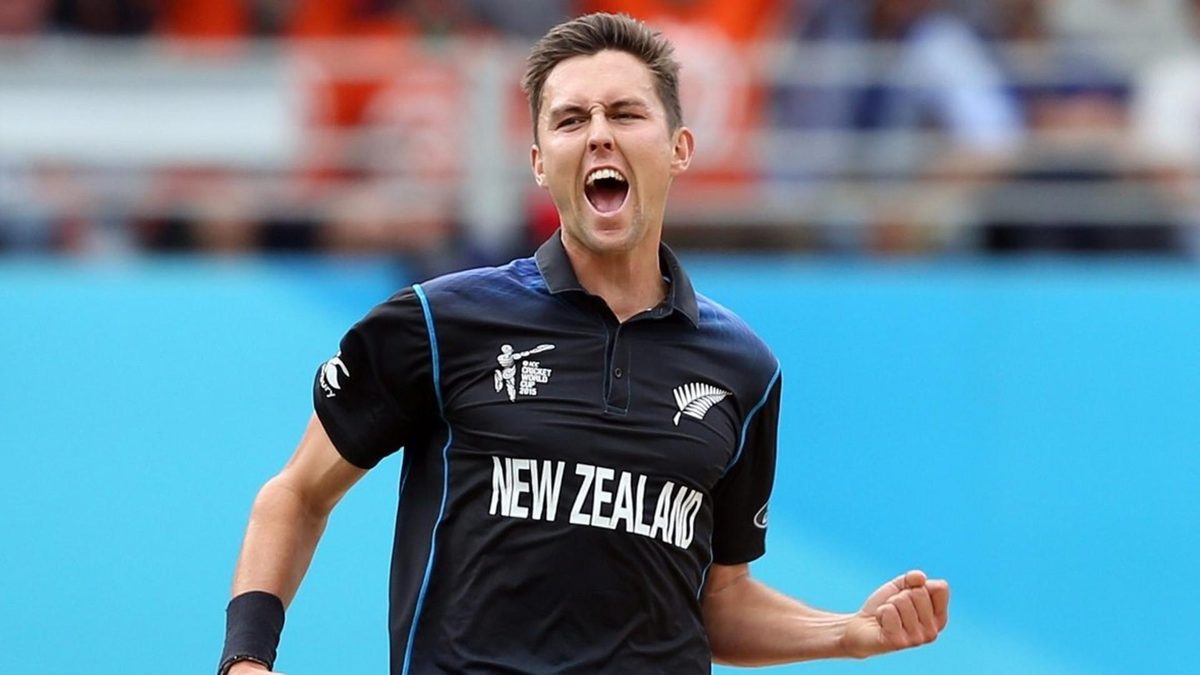
Trent Boult is arguably the most devastating fast bowler to play men’s ODIs for New Zealand, but he may not be an obvious choice for the 2023 World Cup in India.
New Zealand have been playing ODIs for half a century, and only four of their fast bowlers – Kyle Mills (240), Tim Southee (210), Chris Harris (210 – databases do qualify him as ‘fast’), and Chris Cairns (200) – have more wickets than Boult’s 187.
None of the four, however, has an average under 27 or a strike rate below 34: for Boult, the numbers read 23.97 and 29.1.
Lowering the wickets bar will bring us to Richard Hadlee (158 wickets at 21.56 and 39.1) and Shane Bond (147 at 20.88 and 29.2), or even Matt Henry (127 at 25.59 and 29.8).
But at 1.89 wickets an ODI, Boult has been more devastating than almost any fast bowler in the history of the format. With a 100-wicket cut-off, only Mitchell Starc’s 1.99 (219 in 110 ODIs) makes better reading in the history of the format.
Nearly a fifth of Boult’s wickets have come in World Cups, despite him playing in only two editions. In 2015, his 22 wickets were the joint-most of the tournament (along with the ubiquitous Starc). In 2019, he added another 17 – and was entrusted with the Super Over in the final.
But Boult’s participation at this year’s World Cup is no guarantee. Boult himself is keen to play and David White, NZC’s outgoing chief executive, commented that he would be “very surprised” if Boult is not picked.
Why, then, has Boult not played for New Zealand in any format since last year’s T20 World Cup? Why is he not a certainty for the World Cup?
A matter of priorities
England toured New Zealand for two Test matches earlier this year. When Kyle Jamieson and Henry missed the first Test, the selectors called up not Boult – who lives close to the venue, Bay Oval – but Blair Tickner and Scott Kuggeleijn.
“It felt bizarre, it really did. I was hoping that I would get a call-up… Test match cricket was on, a couple of kilometres down the road, and I wasn’t part of it,” Boult recollected.
To be fair, he had probably seen it coming last August, the day he had requested to be released from his national contract to spend more time with his family.
Of course, he is still available for selection “if and when available”, but his focus is mainly on the franchise-based Twenty20 leagues that paid more for less hours of effort – and where Boult remains hot property.
Over a century ago, Syd Barnes was criticised for choosing league cricket in favour of the playing in the County Championship. The stigma associated with career routes that did not follow a geopolitical hierarchy, however, disappeared over time.
As franchise cricket spread its wings in the 21st century, the West Indian megastars embraced the concept of freelance careers in cricket. In 2018, AB de Villiers retired from international cricket. In 2021/22, Quinton de Kock stepped back frmo Test cricket. Last winter, 21-year-old Will Smeed moved away from first-class cricket. The list was long even before Boult.
Yet, in a way, Boult’s situation is different, as are the cases with Jimmy Neesham, who declined a central contract a la Boult, or the now-retired Colin de Grandhomme.
From the very onset, NZC approached Twenty20 cricket differently from other ICC Full Members. During the first edition of the IPL, for example, they flew in several players just a couple of days ahead of the Lord’s Test match.
As the West Indies board fought bitterly with – and kept losing to – their players in country-over-league squabbles, NZC eased into the situation and let the cricketers be. “You would end up with players retiring earlier, potentially prioritising IPL over international cricket,” Mike Hesson would later explain.
But that was not all. As boards around the world tried to build glitzy Twenty20 leagues, NZC did not try to replicate them. They watched as the Mzansi Super League sank, the LPL kept disappearing, the BBL expanded before shrinking back, and more.
Of the 12 ICC Full Members, New Zealand are the only side that do not have a Twenty20 (or 100-ball) league based on teams other than the ones they always had in domestic cricket. They realised that while the format was necessary, the concept of franchises was probably not.
As for the cricketers, there was little resistance – a stark contrast to what Glenn Turner had faced when he had signed up as a Worcestershire professional in the late 1960s: “Being the first real professional I was supposed to be playing for the dirty dollar … There was a strong feeling among the administration and our country as a whole that you ought not to play for money.”
Yet, while the mindset has changed, the culture with roots in patriotism dominates. “Culture is perhaps New Zealand’s greatest advantage – and the hardest to replicate. A combination of history – the relative lack of regional divides – and the small geography and ease of travel within the country have created a culture in which the six districts are tasked with furthering the interests of the national team first, and winning themselves second, mirroring the system in New Zealand Rugby,” described Stefan Szymanski and Tim Wigmore in Crickonomics.
Thus, while NZC has no qualms over releasing cricketers – even from their contracts – if they want to play leagues, they are just as likely to pick their squad from the ones who will be available to them all the time.
That was perhaps why when they opted for Tickner and Kuggeleijn and not Boult, of 78 Test caps and 317 wickets. Only time will tell whether they will do that even at the World Cup, that too after two consecutive defeats in finals.








